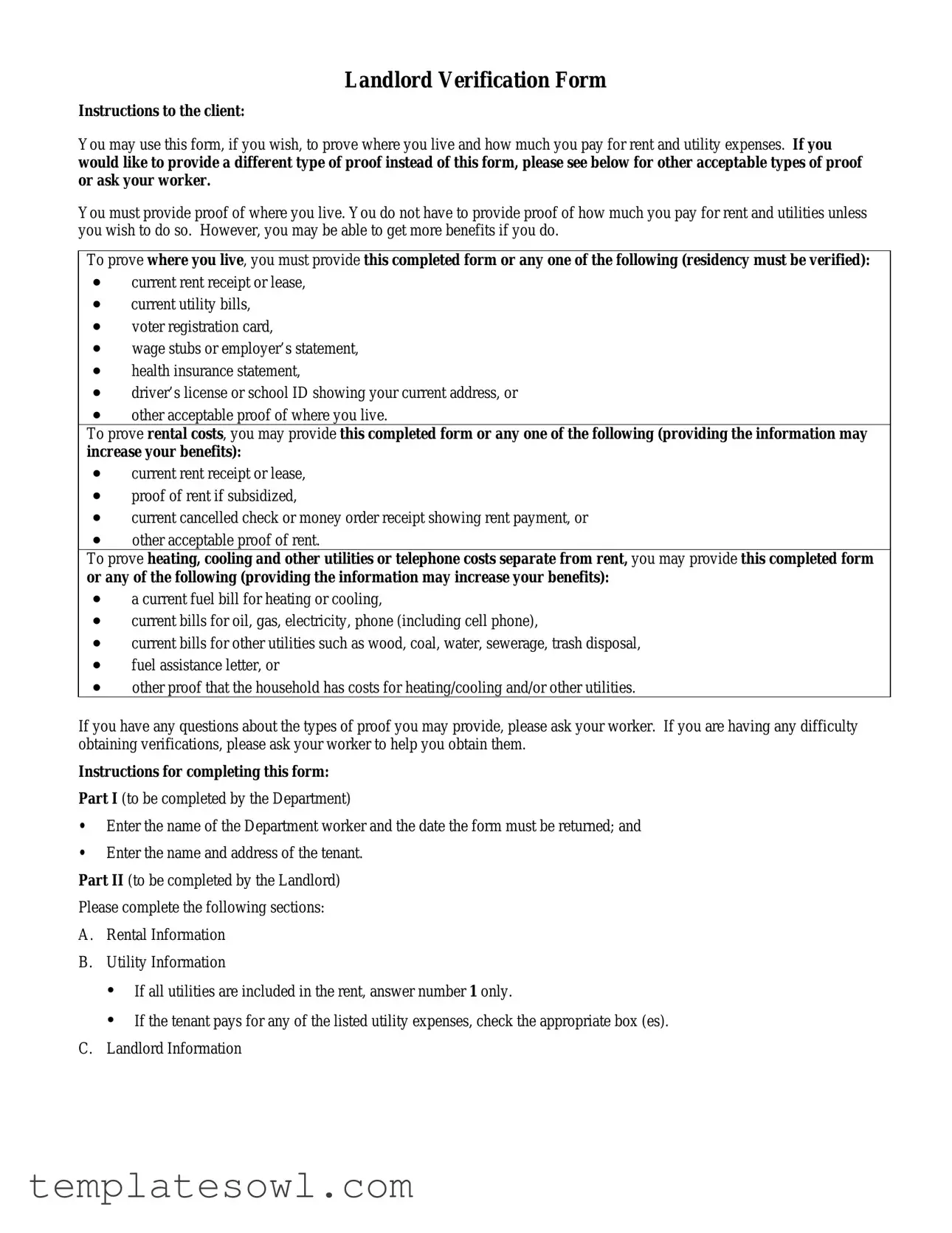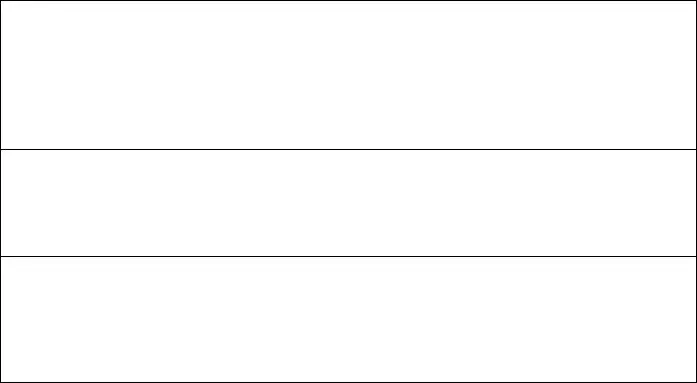Landlord Verification Form
Instructions to the client:
You may use this form, if you wish, to prove where you live and how much you pay for rent and utility expenses. If you would like to provide a different type of proof instead of this form, please see below for other acceptable types of proof or ask your worker.
You must provide proof of where you live. You do not have to provide proof of how much you pay for rent and utilities unless you wish to do so. However, you may be able to get more benefits if you do.
To prove where you live, you must provide this completed form or any one of the following (residency must be verified):
•current rent receipt or lease,
•current utility bills,
•voter registration card,
•wage stubs or employer’s statement,
•health insurance statement,
•driver’s license or school ID showing your current address, or
•other acceptable proof of where you live.
To prove rental costs, you may provide this completed form or any one of the following (providing the information may increase your benefits):
•current rent receipt or lease,
•proof of rent if subsidized,
•current cancelled check or money order receipt showing rent payment, or
•other acceptable proof of rent.
To prove heating, cooling and other utilities or telephone costs separate from rent, you may provide this completed form or any of the following (providing the information may increase your benefits):
•a current fuel bill for heating or cooling,
•current bills for oil, gas, electricity, phone (including cell phone),
•current bills for other utilities such as wood, coal, water, sewerage, trash disposal,
•fuel assistance letter, or
•other proof that the household has costs for heating/cooling and/or other utilities.
If you have any questions about the types of proof you may provide, please ask your worker. If you are having any difficulty obtaining verifications, please ask your worker to help you obtain them.
Instructions for completing this form:
Part I (to be completed by the Department)
•Enter the name of the Department worker and the date the form must be returned; and
•Enter the name and address of the tenant.
Part II (to be completed by the Landlord)
Please complete the following sections:
A.Rental Information
B.Utility Information
If all utilities are included in the rent, answer number 1 only.
If the tenant pays for any of the listed utility expenses, check the appropriate box (es).
C. Landlord Information
Part I
___________________________________________
Name of Department Worker
Return completed form by _____/_____/_______
Part II (Please complete, sign and date this form.)
__________________________________
Tenant’s Name
_________________________________________
Tenant’s Address
_________________________________________
City/TownZIP
A. Rental Information
1. |
The total rent for this address is: $_________ per |
month |
week |
other ________ (specify) |
|
|
2. |
Does the tenant live in: |
Public Housing? |
|
|
|
|
|
Yes |
No |
|
|
Section 8 or Massachusetts Residential Voucher Program? |
Yes |
No |
3. |
If subsidized: Tenant Payment is: |
$_________ per |
month |
week |
other ________ (specify) |
|
|
4. |
Is the tenant behind on the rent? |
Yes |
No |
|
|
|
|
|
|
|
B. Utility Information
1. |
Are heat/air conditioning and all other utilities included in the rent? |
Yes |
No |
2. |
If not, does the tenant pay for any of the following separate from the rent? |
|
|
|
|
|
|
|
|
|
|
|
Utilities |
|
|
|
|
|
|
|
|
|
|
|
|
Heat |
|
|
|
|
|
|
|
|
|
|
|
|
|
Air conditioning |
|
|
|
|
|
|
|
|
|
|
|
|
|
Electric |
|
|
|
|
|
|
Gas for cooking |
|
|
|
|
|
|
|
|
|
|
|
C. Landlord Information
Landlord's Signature __________________________________________________________________________________
Landlord’s Name (print) ___________________________________________________ Date _____/_____/__________
Landlord’s Address___________________________________________________________________________________
Landlord’s Daytime Telephone Number (_____) ______ - __________
LL/VER (Rev. 1/2008) 18-083-0108-05


